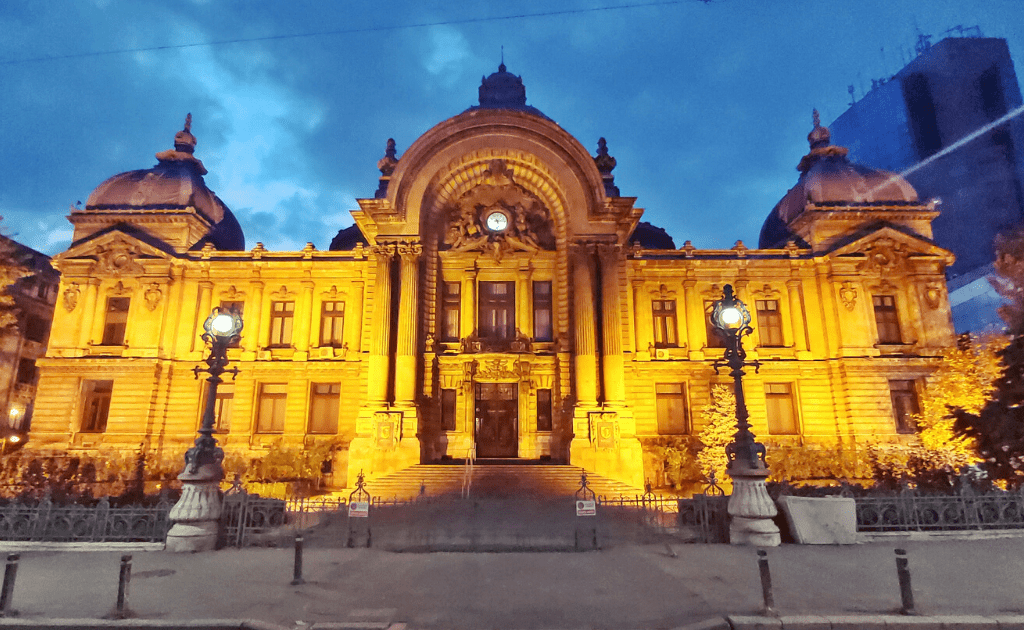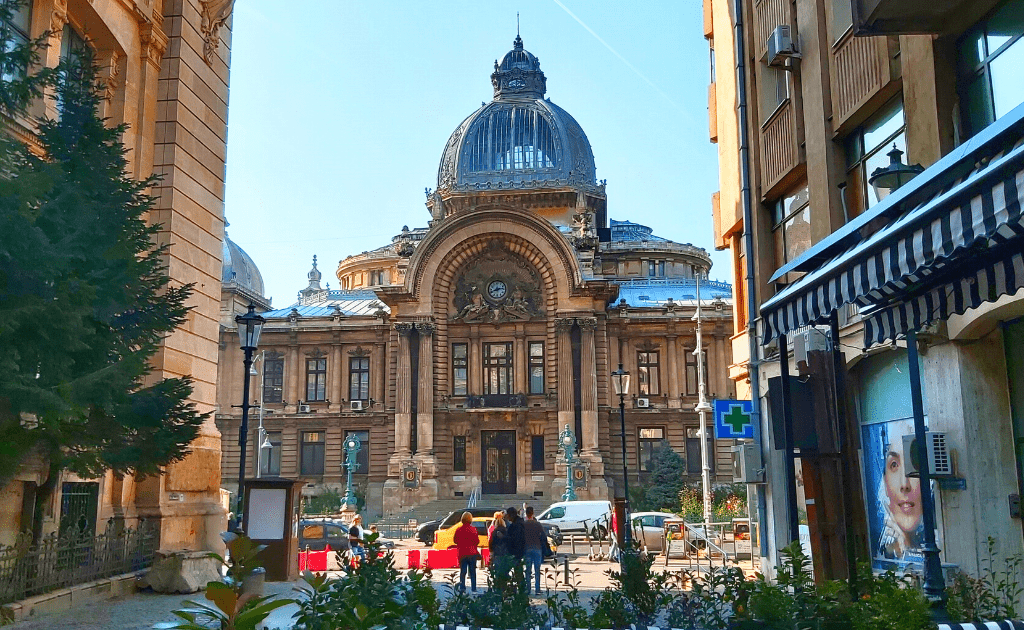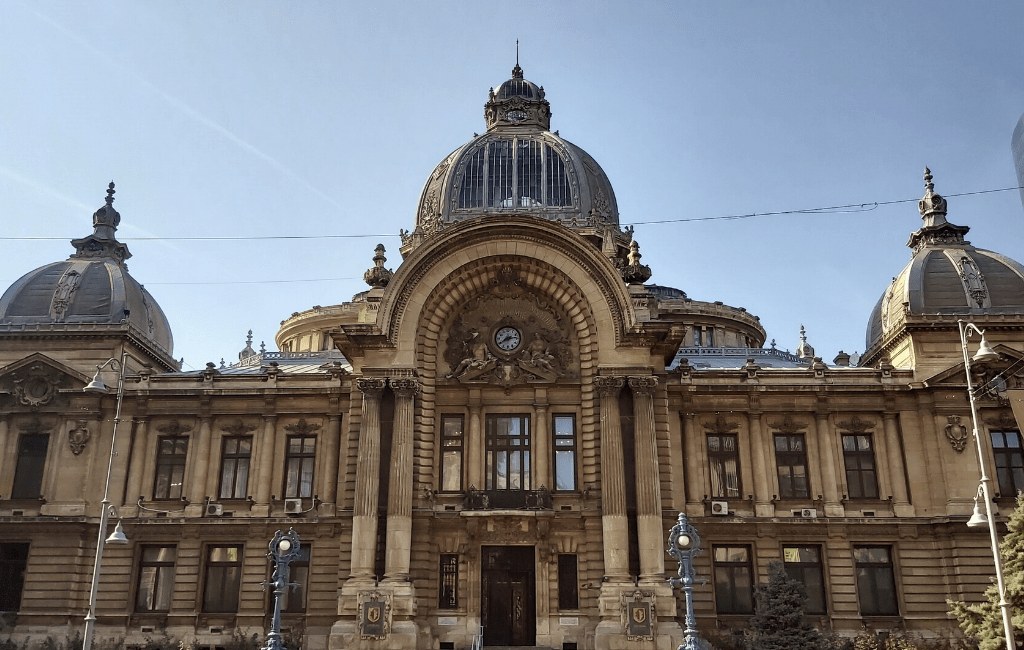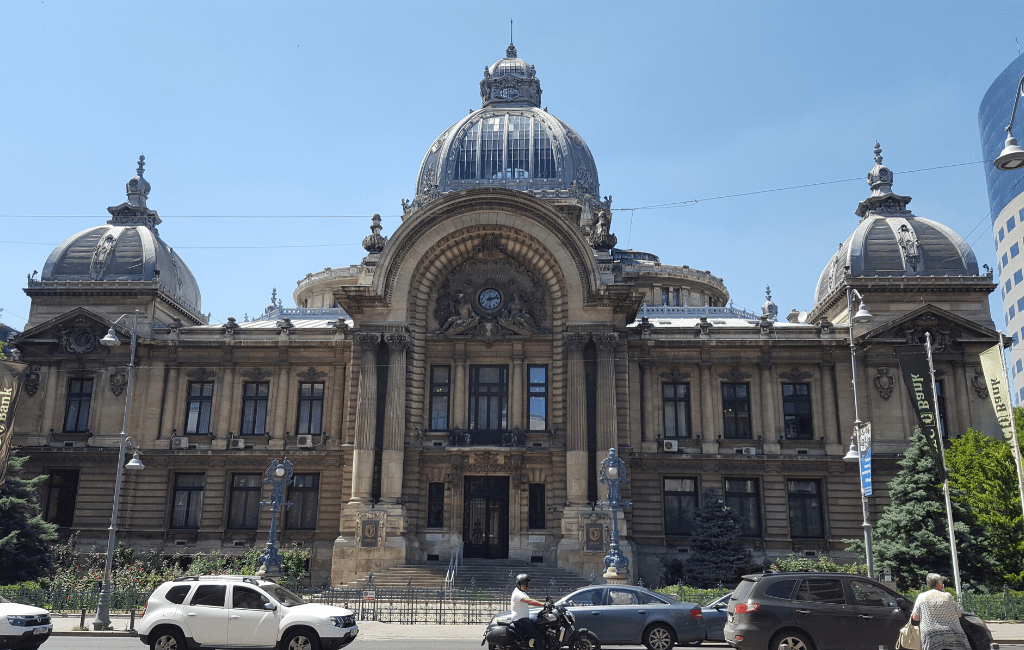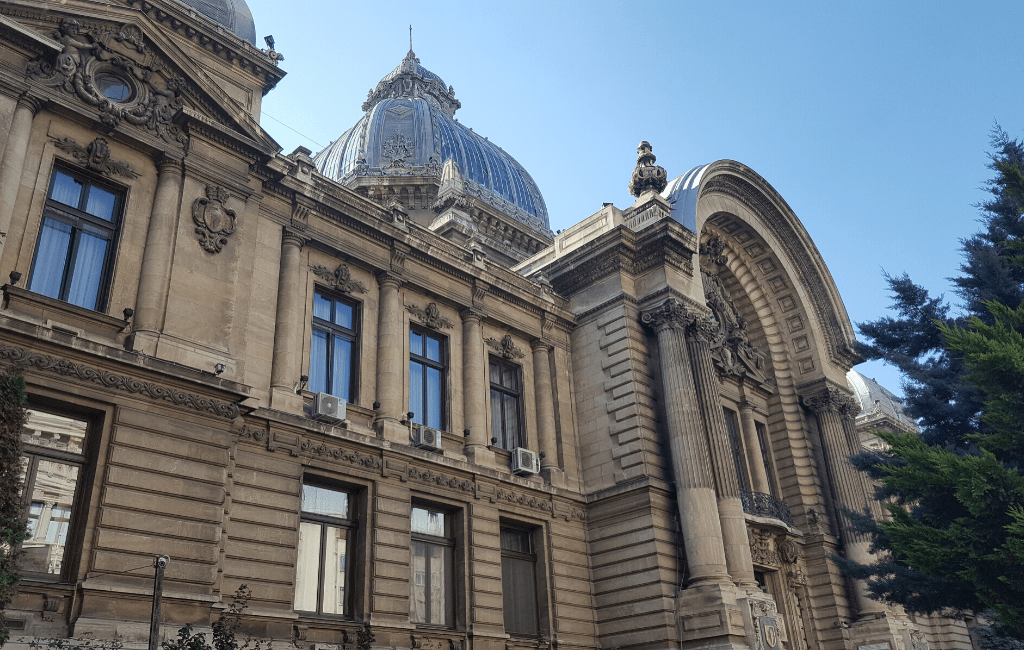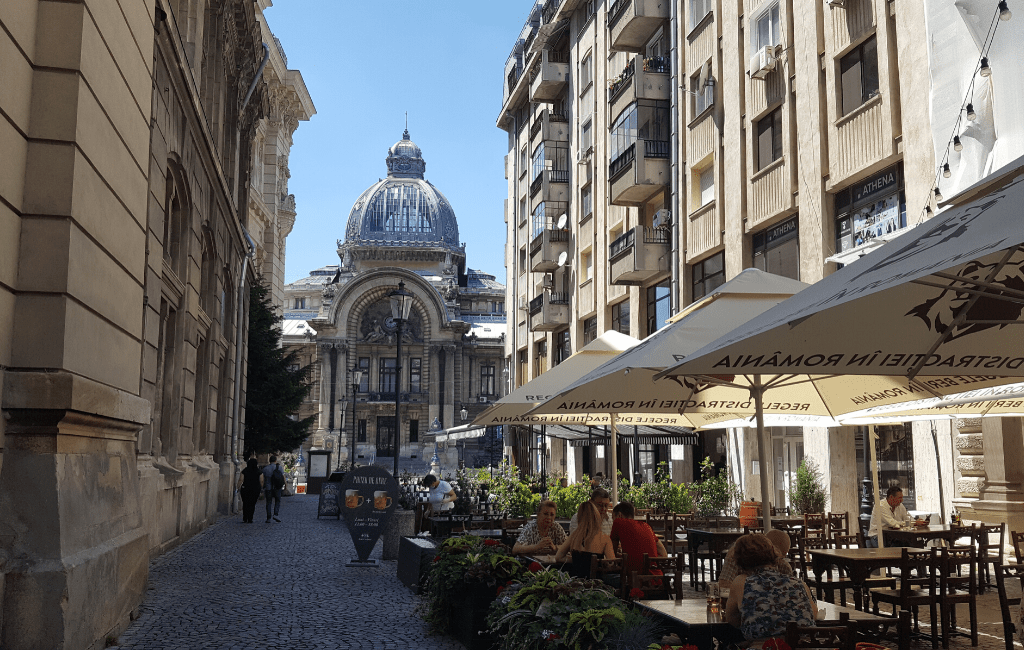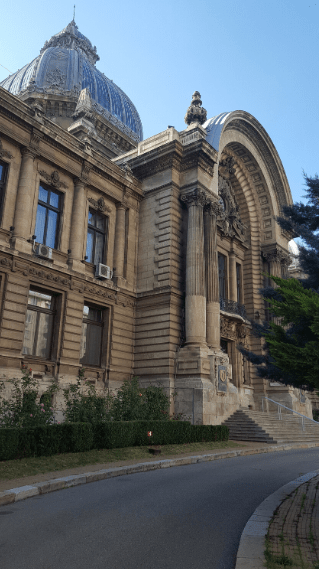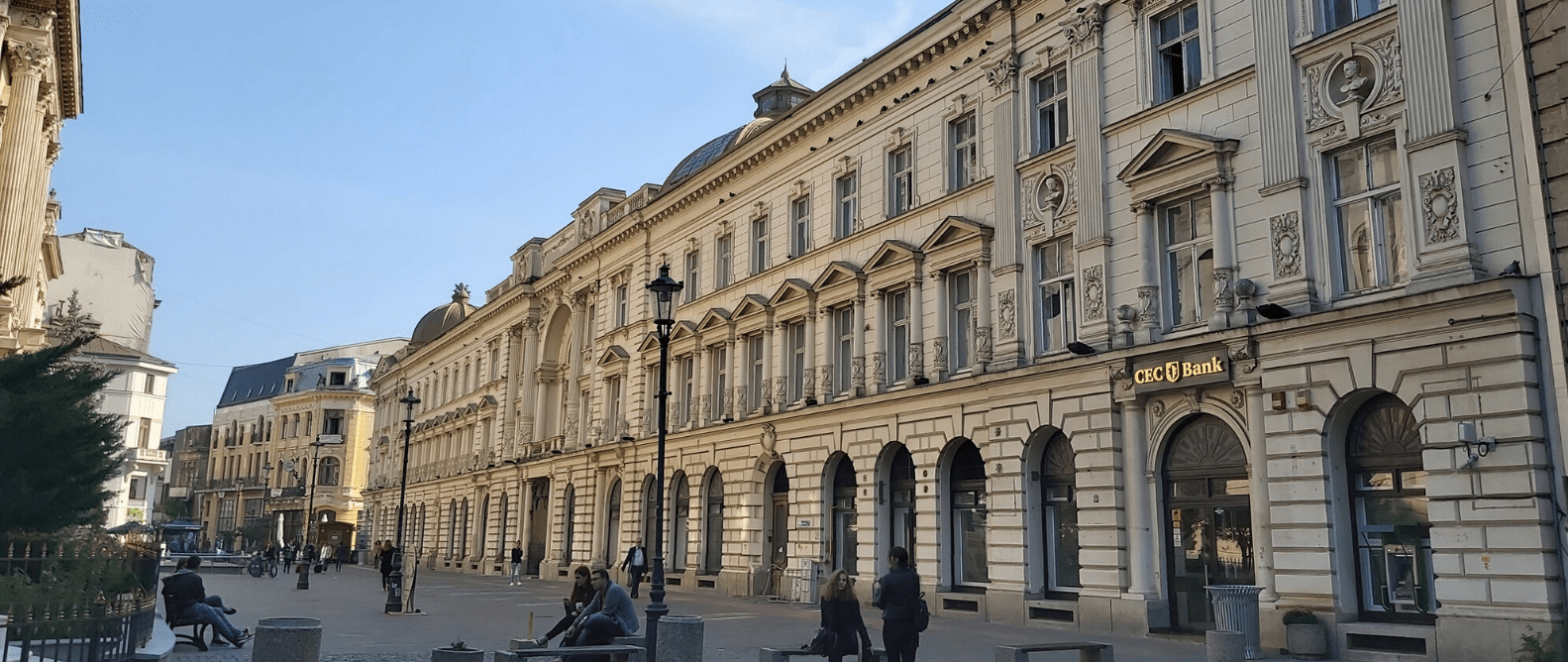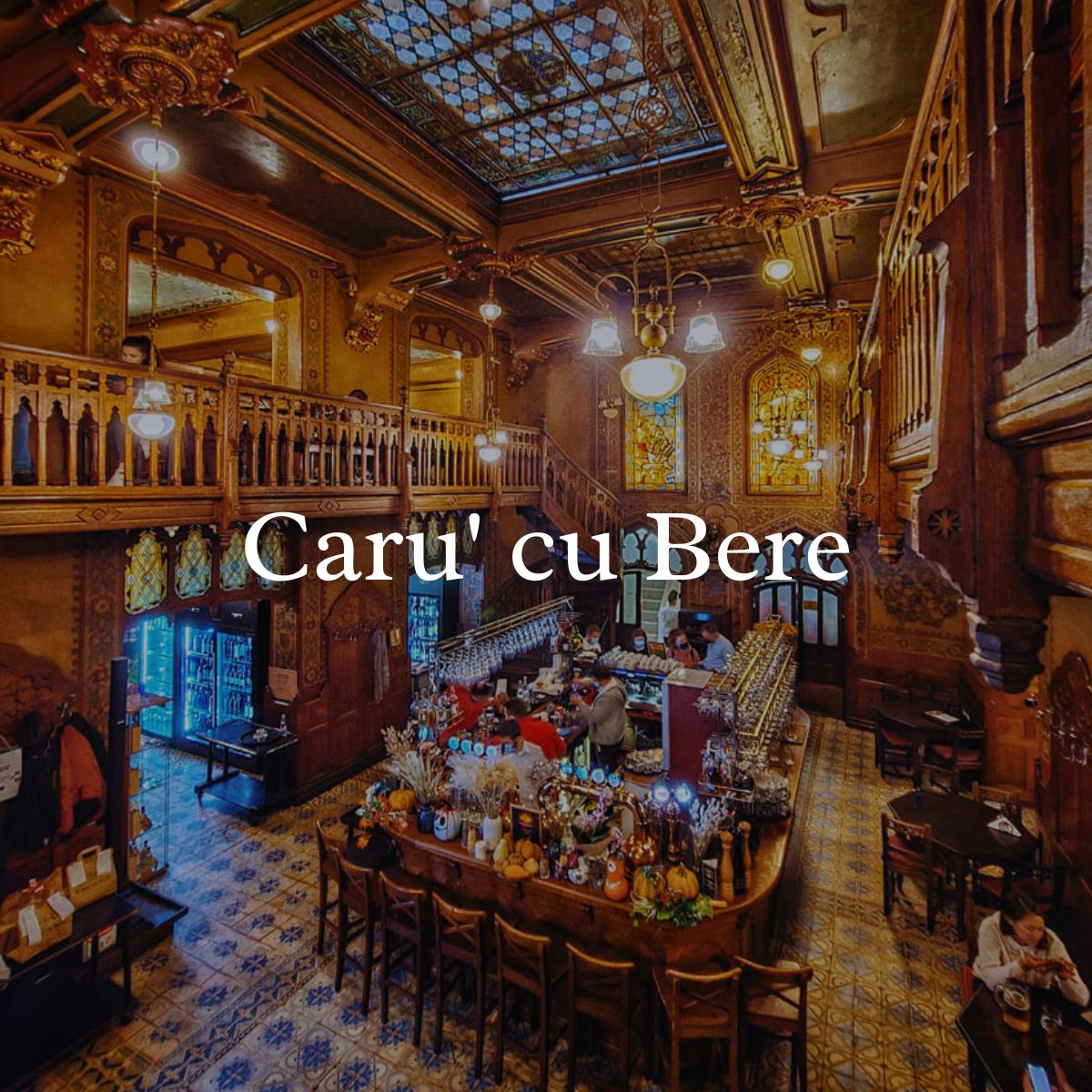The CEC Palace is one of those architectural symbols of the Little Paris, as Bucharest was once known, that has remained today a landmark for the identity of Bucharest. The imposing architecture and the eclectic design of the building seem to speak for themselves about the period through which Romania crossed during the 19th century. Beyond the impressive building, there is a paradoxical place story: it was one of the oldest and most sought after prayer places in the Romanian Country, the Church of the "Saint John the Great" Monastery erected since the time of Mihai Viteazul, 16th century. A small dwelling, made of wood like most of the time, but after a century begins to deteriorate. In 1703 the church is restored by Constantin Brancoveanu. The new church was beautiful, like most Brancovian places, with a porch with three arches, on four masts carved with skill. Around it, like the current garden of the Deposit House, there is an inn where the most famous merchants lived until the end of the 18th century. More than for its beauty, the church was famous for the wonders that happened to the sick persons who stepped inside. Later, because the lack of money, lack of interest and lack of love for the past, the church was left to deteriorate. In 1875 it reaches the point where authorities asked for its demolition.
A stone carpenter, Santalena, steals the columns with the flowered capital, the furniture, the candles, and the icons. All that could be saved was a royal jilt with a canopy kept by the Belu family. In the church cemetery Ienachita Vacarescu - the author of the first book of the grammar of the Romanian language, was buried.
So, the former monastery became the headquarters of the Deposit House - Romania's first bank institution, founded in 1864, 16 years before the National Bank, and then the headquarter of the CEC, the current CEC Bank. Returning to this iconic building, an authentic French Baroque style, it is important to mention that the architect was Paul Gattereau and its cornerstone was laid by King Carol I of Romania. Its construction lasted between 1896 and 1900. For the construction, there were used Romanian materials: massive Dobrogea stone for the facade and for the entrance, and Dobrogea marble for the mosaic in the central hall and for the stairs.
After the impressive facade, the huge dome attracts your attention immediately. But the CEC Palace has 5 domes, one in each corner, and one in the middle, the biggest one. The domes help acoustics of the building, especially the acoustics from the main hall where the counter clerk was established. Due to the big dome, the sound spread vertically. In this way, what you were talking with the counter clerk remained between you. This was a very important aspect given the fact that the main hall could hold 400 people at a time. The counters were in function from May 1990 till November 1999, almost 100 years!
Did you know that the CEC Palace remained intact after two big earthquakes (1940 and 1977), after the Soviet bombing (1941), and after the Anglo-American bombing (1944)?
Unfortunately, you can not see the magnificent interior of the CEC Palace because it is not open to the public. The only chance to admire it is to make a reservation for a private event.

